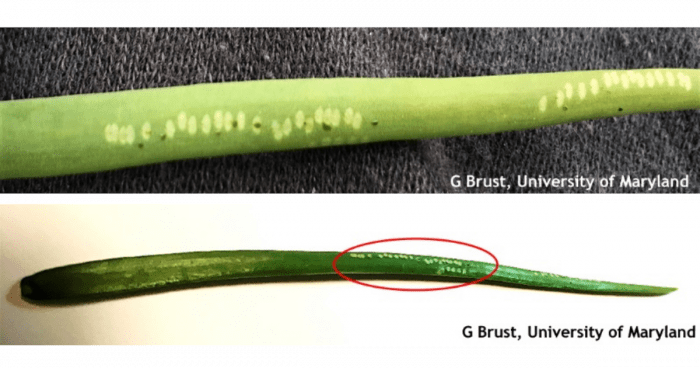Jerry Brust, IPM Vegetable Specialist, University of Maryland, jbrust@umd.edu
If you are growing fall leeks or garlic or other Allium species you need to, for the next month or so (September-first freeze) watch for the tell-tale marks left by Allium leaf miner. Allium leaf miner, Phytomyza gymnostoma, tell-tale marks consist of several small round white dots (made by the female’s ovipositor) in a row that appear on the middle towards the end of leaf blades (Fig. 1). If you had some infestation last year you will want to be looking for the signs of this pest now, especially if you grow leeks. When eggs hatch the larvae at first mine leaves and then move down to the bulbs and leaf sheathes where they feed and eventually pupate. The feeding damage can open up the foliage and bulb to fungal infections. Both vegetable garden and landscape Alliums should be inspected for this pest.

Figure 1. Onion leaf blades showing round white dots made by female Allium leaf miners
Row covers can be used to exclude this pest when Alliums are first planted. A good insecticide to use for control of the larvae is spinosad (Entrust is OMRI-labelled). Entrust is a translaminar insecticide, which means it will be absorbed into the leaf tissue of the plant and held there in an active state so when larvae feed on the foliage they will contact the insecticide. Two or three applications of the insecticide used 2 weeks apart from each other with the first one coming only after oviposition marks (white dots) are seen should give good control of this pest. The use of a penetrant adjuvant (e.g., neem oil) is recommended for better control of ALM.
